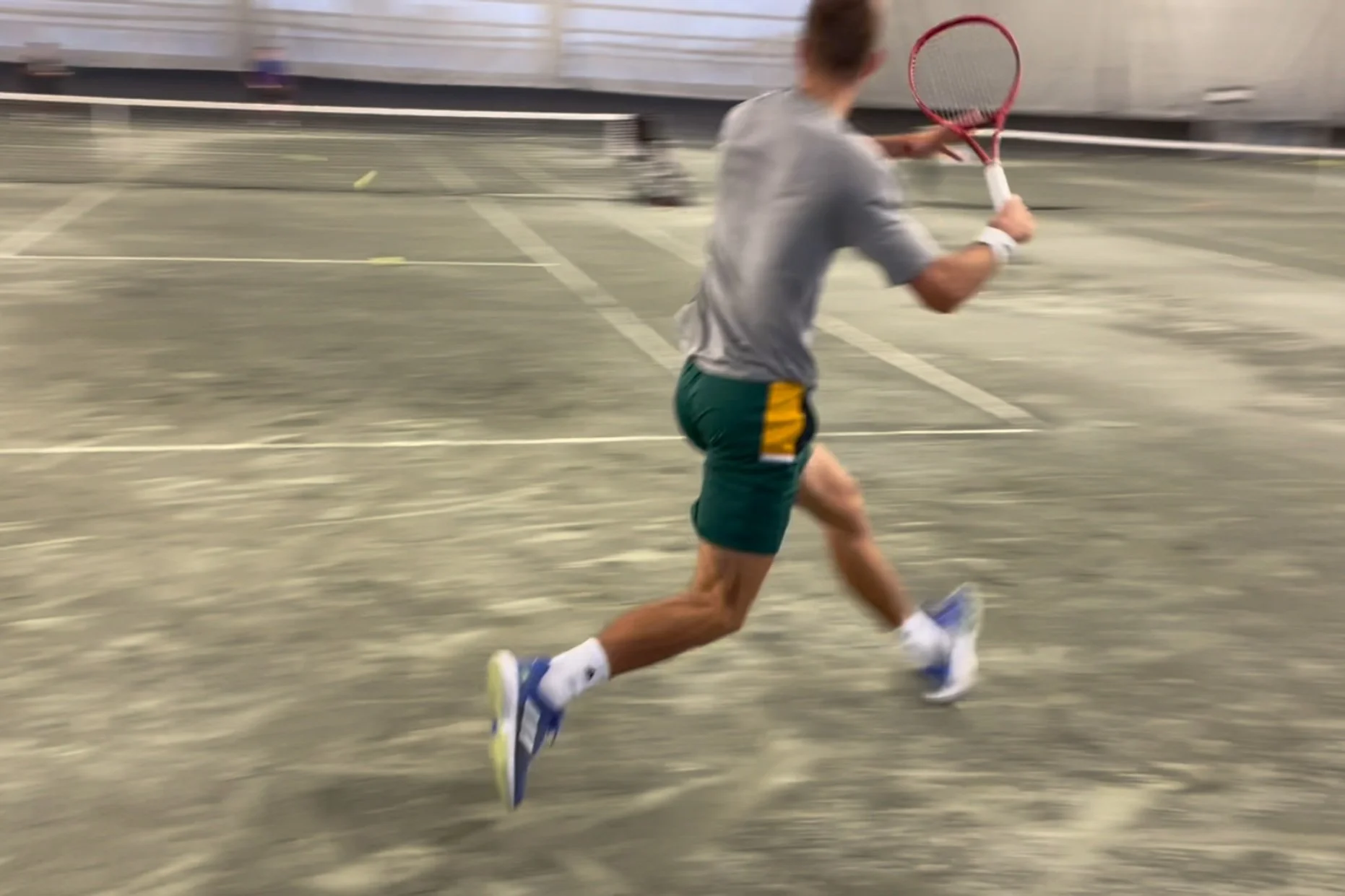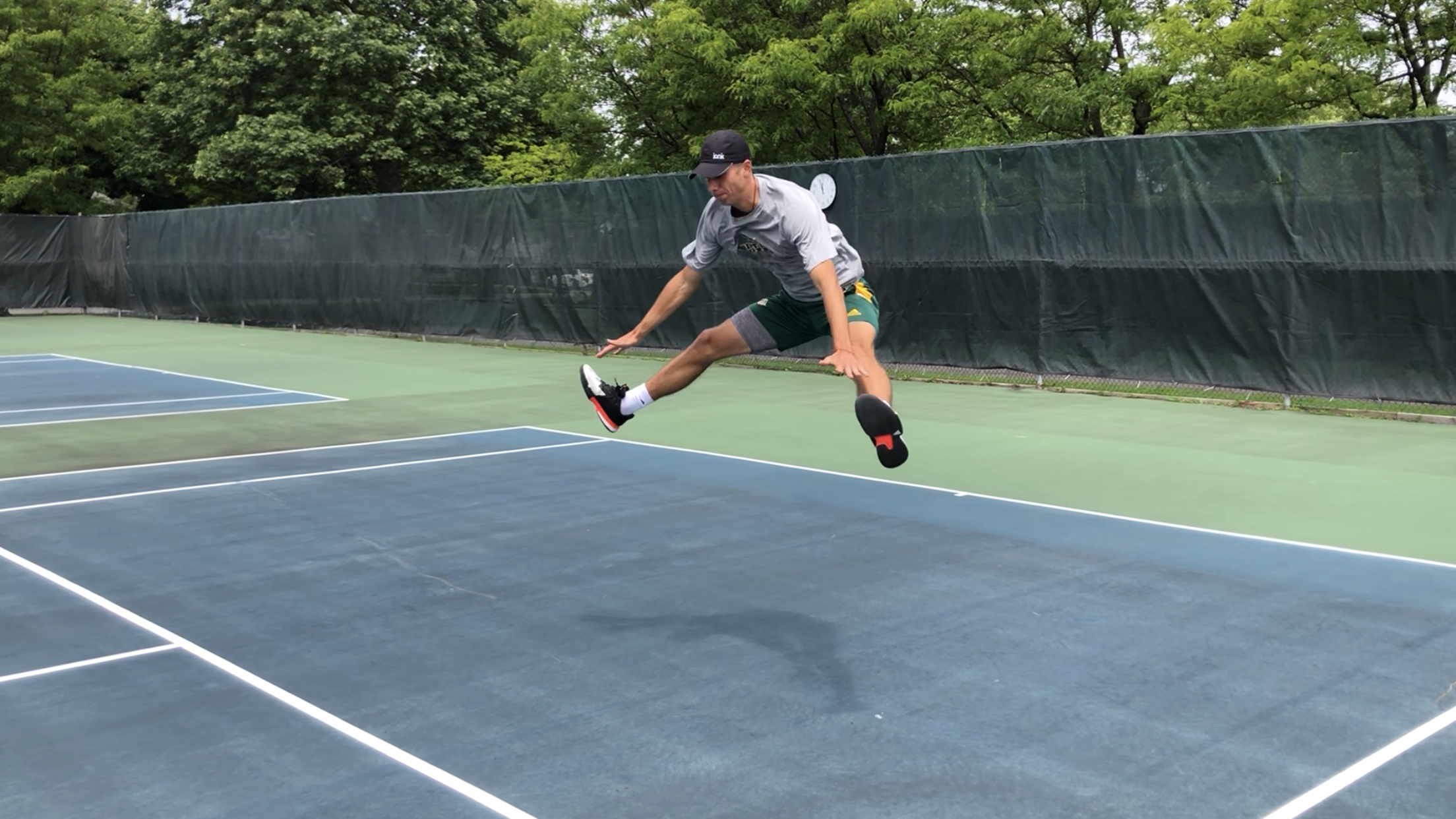Most of the tennis players I coach are committed to improving their game. They come my way because they want to move better, get out of pain, feel more explosive, improve their skill—or a combination of the above.
Oftentimes, when we first dig into what they’ve been doing, it looks something like this: lots of tennis, a bit of weight training, and maybe some machine cardio.
There are countless ways that tennis players can get into shape. From running workouts to weight training, on-court drills and more.
All have their pros and cons. And all can be utilized at different times of the year + at different stages of a player’s development.
Recently, plyometric and jump training has resurfaced as a popular training modality amongst tennis players. You’ll see many performing hurdles, line hops and other types of jumping variations.
Many athletes have the following problem - they seek to improve their sport performance while doing an overly large amount of the their training in the weight room.
Tennis players, on the other hand, have the reverse problem. They spend way too much time on-court and their off-court training closely resembles (or mimics) what they’re already doing on the court.
Then there are coaches and players (even parents) that often seek ‘tennis-specific’ training. Depending on how you define it, ‘tennis-specific’ can mean a lot of different things.
I’ve been asked countless times - from tennis coaches to players and even parents - 'how can I get more leg drive on my forehand?' 'Or more jump from the legs on my serve?' 'Or more explosiveness when moving laterally?' There’s no simple answer. It truly depends on a number of factors, including your strength levels, coordination, training age, biological age, training history, genetics and more. But if I absolutely had to boil my answer down to one form of training, I’d have to look towards plyometrics.
There are many terms to describe plyometrics including plyometric training, plyos, jump training, shock training (that’s what Soviets used to call it) & ballistic training. I may use some of these terms interchangeably throughout this article but they all refer to plyometrics. Whatever you call it, it’s general premise is to increase power output.
The ability to respond quickly and efficiently to an oncoming shot, is perhaps one of the most important qualities a tennis player must possess. This ability is predicated on a number of factors including anticipatory skills, perception skills - picking up cues from the other side of the net, judging the ball appropriately etc. - along with physical qualities, one of them being reactiveness. Further to that, it helps when a player has tremendous change of direction (COD) abilities. Why? Because the player that can recover more efficiently after their previous shot, has a better chance to not only better 'see' the next shot, but also has the ability to respond to that shot with less ‘emergency’ - a term many coaches use.
Unless you’ve been living under a rock, you’ve likely seen countless videos on social media of athletes lifting big weights. And it’s not just athletes from sports like american football, baseball or hockey. Many athletes across various sports - like long distance running, swimming, volleyball - are lifting weights. We're not referring to light dumbbells but rather heavy loads and big lifts. The question is, why? What’s the rationale behind this type of training? Should tennis players learn from these sports?
I’ve briefly spoken about the importance of strength training for tennis. Some factors include the prevention of injury and increases in serve speed. In this post, we’ll dive deeper into the details of maximum strength training and it's relevance to the elite tennis player. Specifically, we’ll outline how max strength development can impact movement characteristics - including explosiveness, first step ability and acceleration.
Not so long ago, a tennis coach I worked alongside asked why I don’t prescribe long runs with our players. You know, to get them into shape. My response at the time was that we need to prioritize their strength, power and explosive abilities. He then asked why I didn’t do long runs with them during pre-season? I didn’t want to get into the details at the time but there were 2 reasons. First, there is no real ‘pre-season’ in tennis, particularly not in junior tennis. And second, long distance running can do more harm to a tennis player than good.
You still see it all the time though. Coaches making their players run. Especially when they want to punish a player for bad behaviour or failing to accomplish a drill. They think, why not kill two birds with one stone? Teach the kid a lesson AND get them in shape. Boy is that not the furthest thing from the truth. Many coaches also still believe that running long distance will build an aerobic base but the type of aerobic qualities that are enhanced during long-distance running, are not the qualities we need for tennis - or any explosive type sport. In this article, we’ll outline the basic physiology of tennis, why you shouldn’t run (there are more reasons then, it’s a waste of time) and what you should do instead.
A few weeks back I wrote an article about strength training for tennis. More specifically, I wrote that physical training for tennis should stop focusing on “fancy drills” that may appear useful on the outside. Among other qualities (not the focus of this article), physical training for tennis should include a properly planned and executed strength training protocol. In this post, I’m going to outline the mechanical demands of tennis - this will hopefully provide a better understanding as to why strength training is important for tennis. And a brief application of strength training will be linked to each tennis demand to provide further context.
This post will touch on one of the most important qualities for a tennis player - reactive ability. Being reactive will help any tennis player be set for more shots and run down tougher balls without having to run any faster than they already do. Now before I get into the nitty gritty details I think it’s important to distinguish between reactive ability and reaction time (no they are not the same thing...although also not mutually exclusive).










